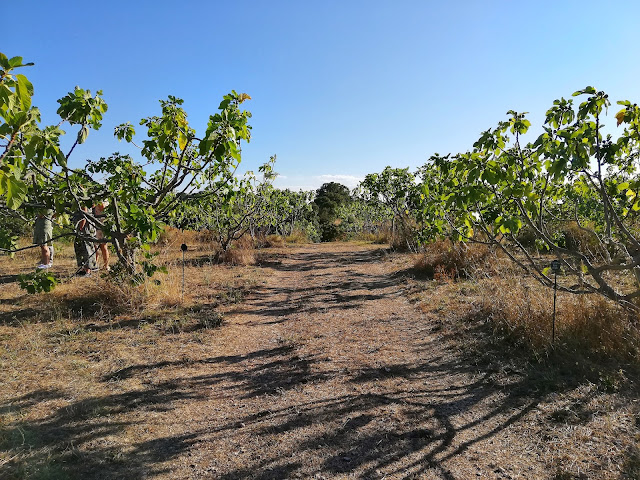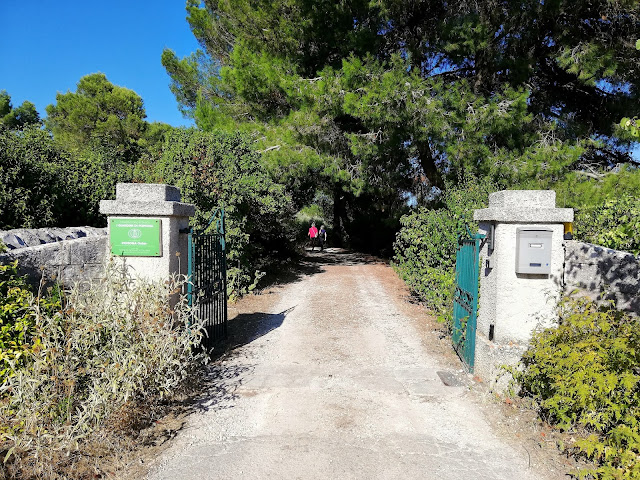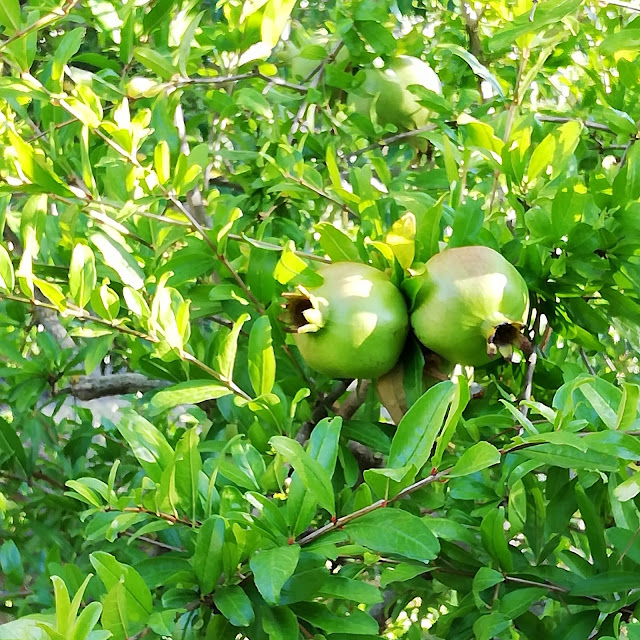Let's have a walk in I Giardini di Pomona, the botanical conservatory in the countryside of Valle d'Itria, and discover its collection of fig trees and not only
“I Giardini di Pomona…what’s that?”
I’d just received the guide of the cycle path of the Apulian aqueduct and as a good snoop dogg I was analising its route. I couldn’t follow it completely, not at the moment, at least: it’s a long journey, you need to plan properly to make that travel. But no one forbade me to go for a little piece of it, maybe near to my hometown, and to stop in some interesting place.
“Oh, look! There’s the route that starts from Locorotondo and, making a detour, I can visit I Giardini di Pomona…the name inspires me…”
I’ve not been on the cycle path yet, there’s always something that gets in the way, but that name, I Giardini di Pomona, stuck with me and I decided to go there, not as a detour but as a precise destination.
An alley accompanies us in the open space where visitors are welcomed and gathered for visits. In the same open space there are some trullis, little apartments to hosts tourists, and before their door, at a table, some people talk quietly sipping a beer. It’s the image of the quiet of the afternoon in the middle of Valle d’Itria.
Before starting with the tour, Paolo Belloni, the founder of this botanical conservatory gives us the welcome and explains how his project has come out, what was his aim when, 16 years ago, he left from Milan to move in Apulia and to dedicate himself body and soul to I Giardini di Pomona.
The visit of I Giardini di Pomona
We start with the plants that Paolo calls “Rambo”, those that can live even in complex climatic conditions. We meet the pomegranate and the arbutus, which are local, the apple Api étoilée, an ancient apple variety that has the sides that look like the tips of a star, hence the name; different varieties of citrus fruits: some of them are very particular like the Flying Dragon, which has wavy branches and they are so peculiar that they look like little sculptures. Each branch looks like a flying Chinese dragon. In the East, it was used to create ornamental hedges.
With this opening tour we are “warming up the engines” (so to speak: the tour is rigorously on foot!) and we go toward the field that hosts what the conservatory is known for: the collection of fig trees. Many fig tree varieties, about 600, live together on a large soil.
We follow our guide step by step, as he explains both the aesthetic and the organoleptic differences of the varieties. But a cold theoretical explanation is not enough to understand, you need to feel, to try, to touch, to taste.
“Can you recognize a mature fig? – Paolo asks – It’s like a beggar: twisted neck, ripped shirt and a teardrop under the eye.” I know it well: I spent my childhood around the fig trees in my grandfather’s country: when you see it hanging, with the skin a bit torn and a sugar drop at the base, the fig is ready to be eaten.
The search for mature figs among the branches starts, a careful analysis of those that can be ready; those that can ripen a bit more are left, the plant still has some work to do with them. With a San Biagio, an Unighiarolo and a Nerucciolo d’Elba the snack is done with a bellyful of figs, in a travel among the different varieties of fruits and in the past of a little Ilaria going around in the country.
We move in another zone, that one that hosts the “star” of the conservatory. The Japanese botanist Masayuki Ebinuma found among the rests of the atomic bomb of Nagasaki of the 9th August 1945 a surviving sprout of kaki tree. He took it, tended it and made it bear fruits.
From the seeds of its fruits, other trees were planted. Today, that kaki tree is in the conservatory in the centre of a maze of lavender, as a symbol of the difficult path that you have to walk through to reach peace. This corner of the gardens is a joy for your senses with a play of purple and green and the scent of lavender.
We move toward the area dedicated to the food forest. A real lesson about the preservation of biodiversity is taking place. Paolo explains how it’s possible to keep water and to cultivate in the same field different plants with a responsible use of water supply.
The aim of a food forest is to create an autonomous ecosystem. Each plant is placed according to its needs and potential, in order not only to live and to bear fruits, but also to play a role in the ecosystem. As Paolo says, agriculture is a great simplification, but nature likes complexity and plants love to live together. Here a way to have what we need from nature, respecting and protecting it.
We return going through the conservatory backwards: we leave the food forest, its water accumulator that works together with dry stone walls; we get down the hill kissed by the orange sunlight of the sunset; we greet the kaki tree in its personal lavender field; we go around hazelnut and pistachio trees, surrounded by the scent of rosemary, thyme, lemon grass, rue, lemon balm and camphor; we thank fig trees for their delicious gifts.
Visiting the conservatory is like walking in a garden with the landlord, who shows proudly the beauty of his plants, but with modesty, because he knows that it’s credit to nature.
I also had a chat with Paolo Belloni about his important project and an interview came out. If you’re curious to know how this project has come out, which values guides it and which activities are organized in the conservatory, you can read it here.
Now, tell me, have you even heard about a botanical conservatory like this? Have you ever visited one of them?










Commenti
Posta un commento
Feel free to leave a comment!
I would be glad to know your opinion! ;)
Thank you! :)